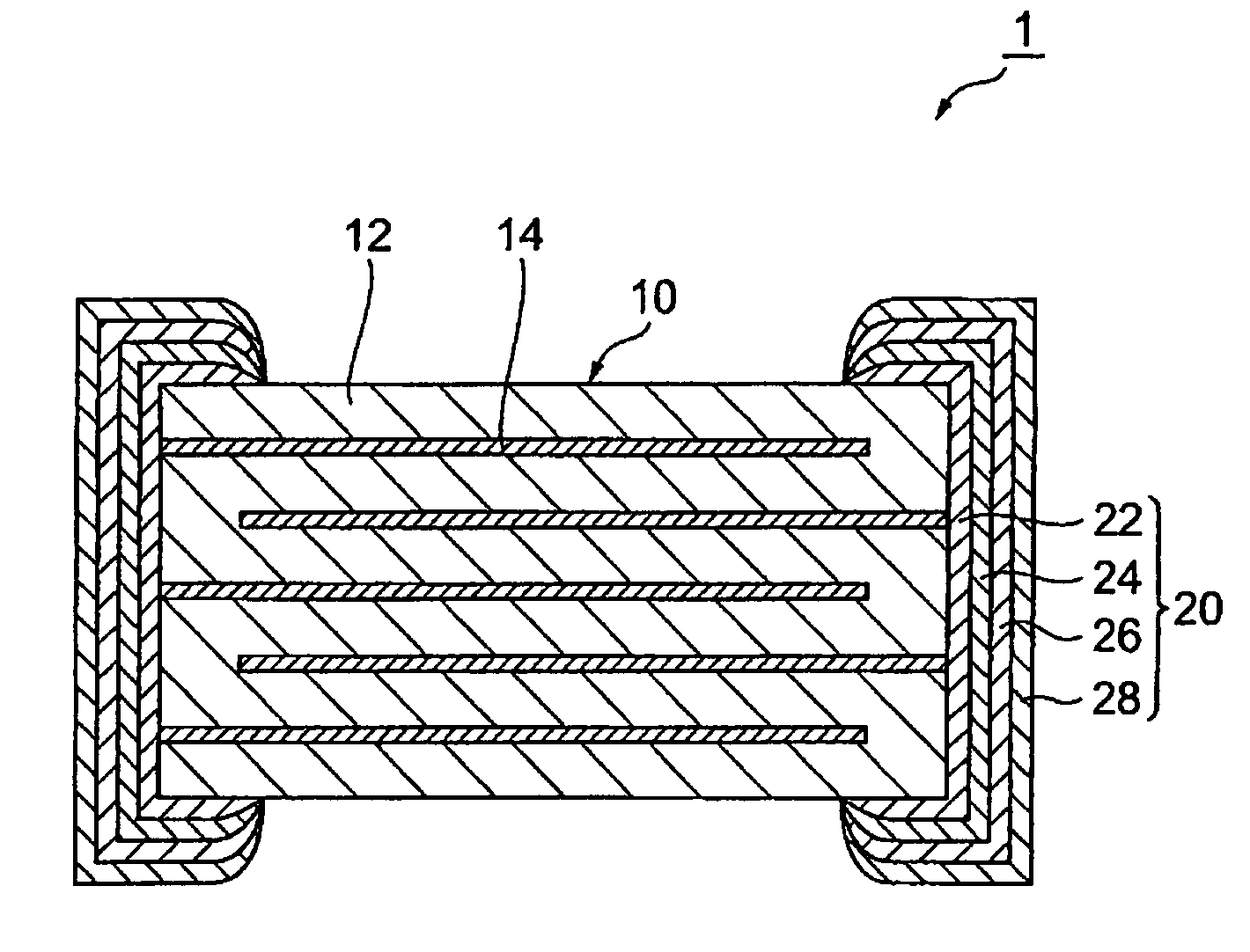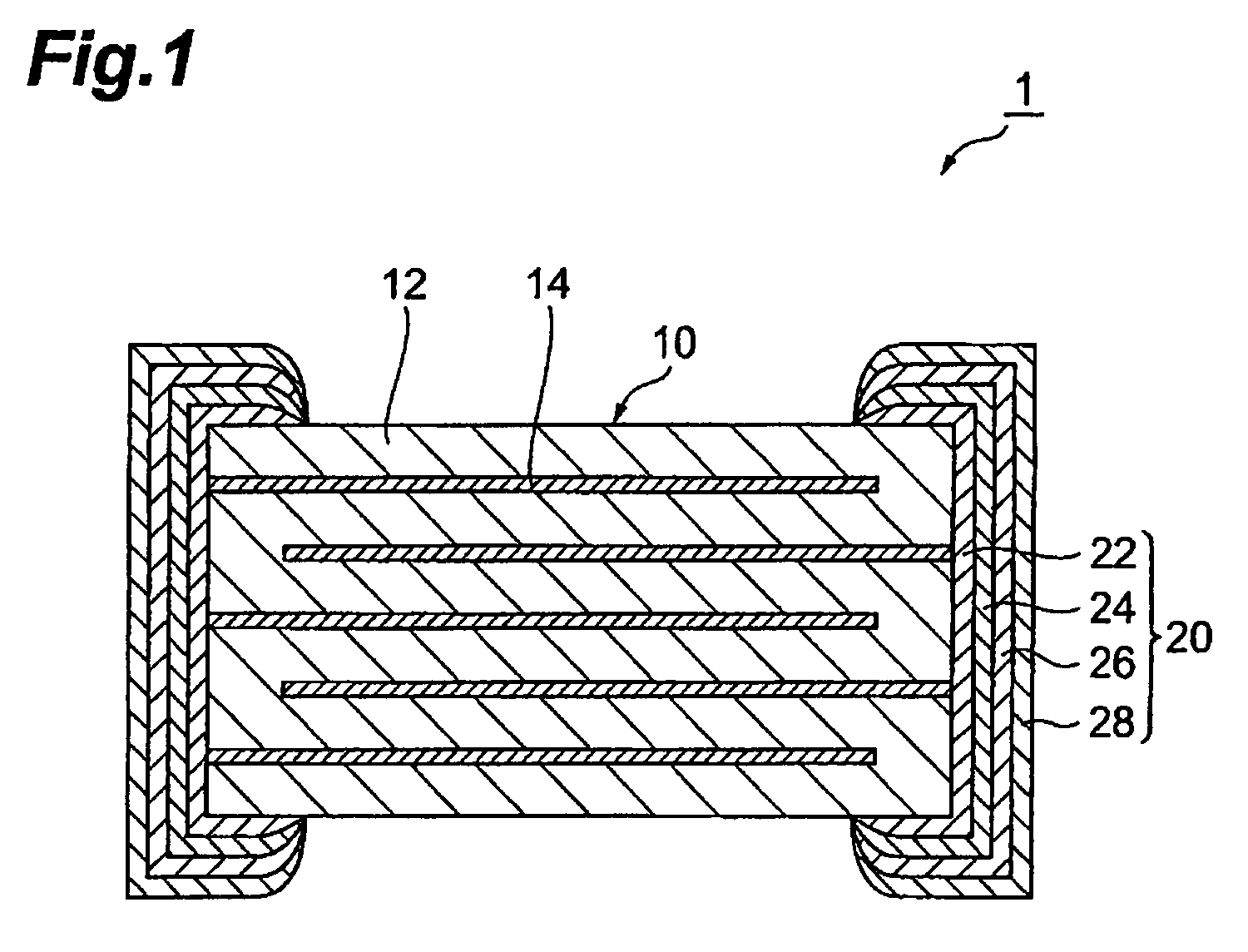Electronic component
a technology of electroconductive resin and component, applied in the field of electroconductive components, can solve the problems of insufficient inhibition of cracks at the joining portion, easy cracks occurrence, etc., and achieve the effects of good cross-linked structure, good cross-linked structure, and good cross-linked structur
- Summary
- Abstract
- Description
- Claims
- Application Information
AI Technical Summary
Benefits of technology
Problems solved by technology
Method used
Image
Examples
example 1
[0044]Firstly, an element assembly, in which a dielectric layer composed of barium titanate and an internal electrode layer composed of nickel were alternately arranged so that the dielectric layer lied on both outsides, was prepared. Next, on a pair of end faces facing to each other in the element assembly, an electroconductive paste containing Cu, glass frit and ethyl cellulose as an organic binder was coated, which was then calcined at 800° C. to form a first electrode layer on both end faces of the element assembly.
[0045]Next, on the surface of the first electrode layer, an electroconductive paste, which included 35% by weight of granular Ag powder having an average grain diameter of 1 μm, 35% by weight of flake-shaped Ag powder having an average grain diameter of 10 μm, 10% by weight of bisphenol-A type epoxy resin (base compound) having a molecular weight of 2900, 2% by weight of novolac type phenol resin hardening agent), and 18% by weight of butylcarbitol (solvent), was coat...
example 2
[0047]A capacitor was obtained in the same way as in Example 1 except that, as the electroconductive paste for forming the second electrode layer, a paste including 33.7% by weight of granular Ag powder having an average grain diameter of 1 μm, 33.7% by weight of flake-shaped Ag powder having an average grain diameter of 10 μm, 9.6% by weight of bisphenol-A type epoxy resin (base compound) having a molecular weight of 3800, 1.9% by weight of novolac type phenol resin (hardening agent) and 21.1% by weight of butylcarbitol (solvent) was used.
PUM
| Property | Measurement | Unit |
|---|---|---|
| temperature | aaaaa | aaaaa |
| grain diameter | aaaaa | aaaaa |
| grain diameter | aaaaa | aaaaa |
Abstract
Description
Claims
Application Information
 Login to View More
Login to View More - R&D
- Intellectual Property
- Life Sciences
- Materials
- Tech Scout
- Unparalleled Data Quality
- Higher Quality Content
- 60% Fewer Hallucinations
Browse by: Latest US Patents, China's latest patents, Technical Efficacy Thesaurus, Application Domain, Technology Topic, Popular Technical Reports.
© 2025 PatSnap. All rights reserved.Legal|Privacy policy|Modern Slavery Act Transparency Statement|Sitemap|About US| Contact US: help@patsnap.com



